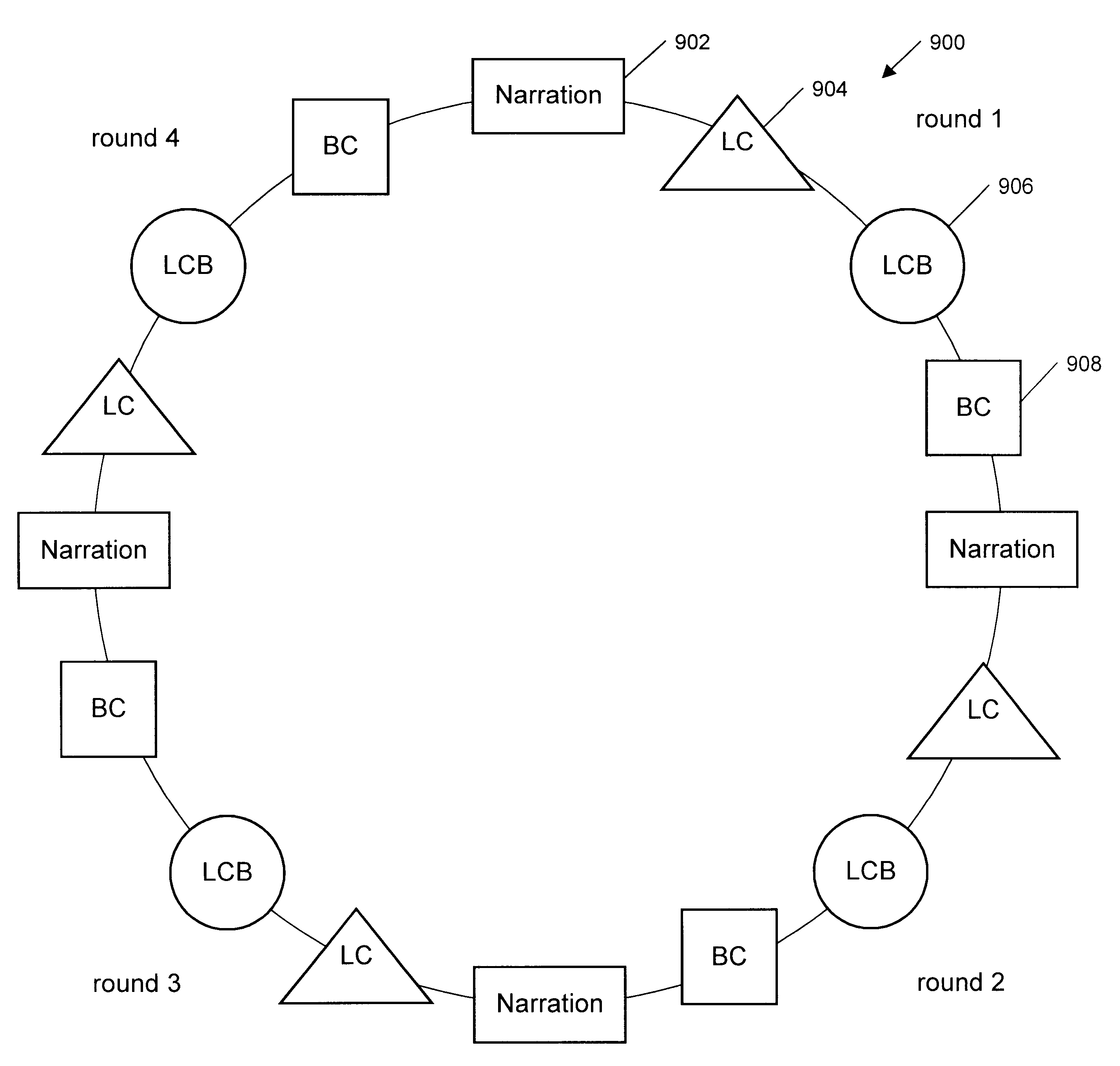Method for adaptive training of listening and language comprehension using processed speech within an animated story
a technology of listening and language comprehension and animated stories, applied in the field of language education, can solve problems such as academic failure, emotional and disciplinary problems, and children with lli's difficulty in detecting and identifying sounds, and achieve the effects of reducing lifelong achievement and self-image, and affecting social and economic developmen
- Summary
- Abstract
- Description
- Claims
- Application Information
AI Technical Summary
Benefits of technology
Problems solved by technology
Method used
Image
Examples
Embodiment Construction
CHICKEN LICKEN
Chapter (Round) One
Chicken Licken was eating lunch one day, when something fell on her head.
"Ow!" she said. "What was that?" She looked up. All she saw was the sky. "The sky is falling!" said Chicken Licken. "I should tell somebody!"
She ran till she saw Squirmy Wormy. "The sky is falling!" said Chicken Licken. "Dig for your life!" said Squirmy Wormy, and wiggled into a hole. Chicken Licken tried to wiggle in after him. But the hole was too small.
She saw Crowy Joey sitting in a tree. "The sky is falling!" said Chicken Licken. "Fly for your life!" said Crowy Joey. He flapped his wings and flew away. Chicken Licken tried to fly, but her wings were too small. She ran all the way to Henny Penny's house.
Chapter (Round) Two
Chicken Licken knocked on the door.
Henny Penny was counting sheep. "Go away," she said. "I'm trying to sleep." Chicken Licken knocked again.
"Come back later," shouted Henny Penny. "I'm laying an egg." Chicken Licken knocked again.
"I'm not buying anything!" ...
PUM
 Login to View More
Login to View More Abstract
Description
Claims
Application Information
 Login to View More
Login to View More - R&D
- Intellectual Property
- Life Sciences
- Materials
- Tech Scout
- Unparalleled Data Quality
- Higher Quality Content
- 60% Fewer Hallucinations
Browse by: Latest US Patents, China's latest patents, Technical Efficacy Thesaurus, Application Domain, Technology Topic, Popular Technical Reports.
© 2025 PatSnap. All rights reserved.Legal|Privacy policy|Modern Slavery Act Transparency Statement|Sitemap|About US| Contact US: help@patsnap.com

